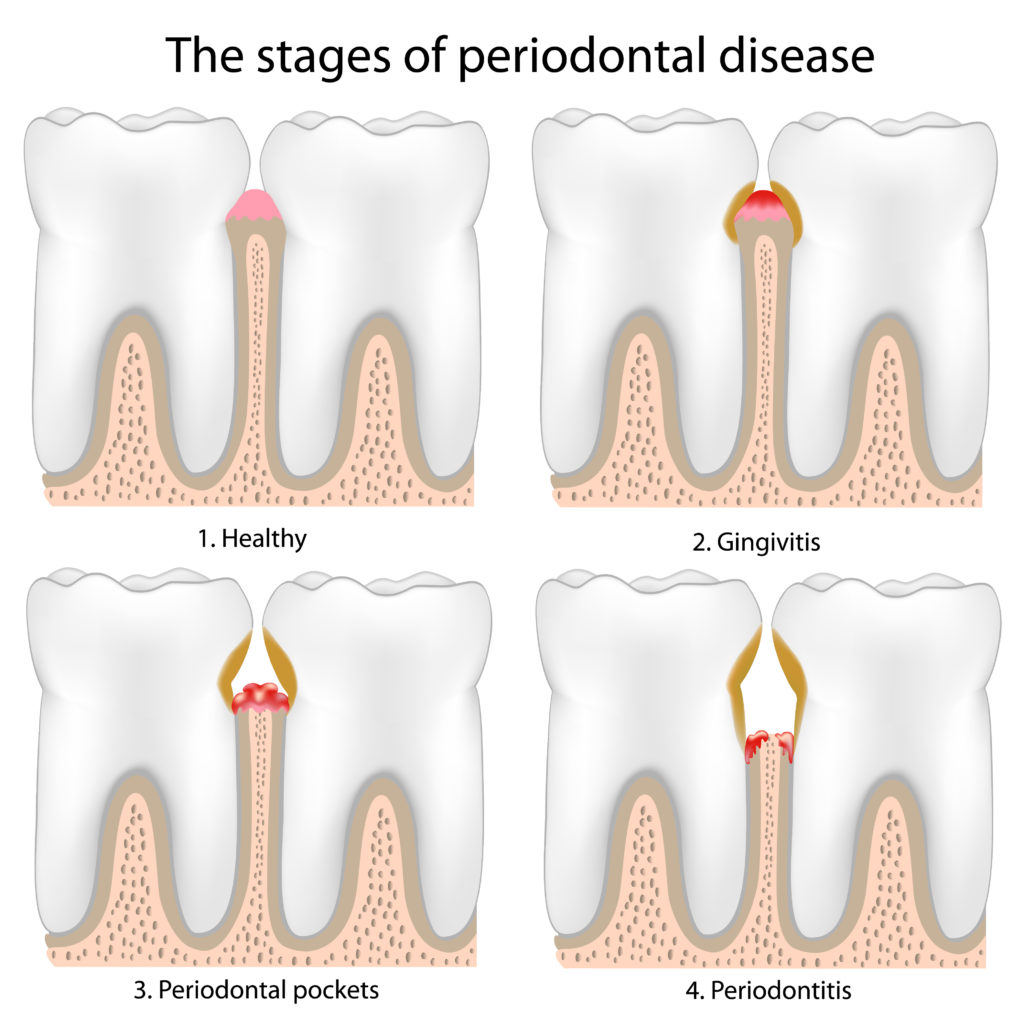
Since February is Gum Disease Awareness Month, it’s a perfect time to learn more about this common condition, especially since an estimated 65 million adults in the U.S. have some form of it. And you may be surprised to learn that gum disease is the leading cause of tooth loss! Not to mention that it’s been found to increase the risk of many other diseases such as heart disease, diabetes, stroke, Alzheimer’s and some cancers. In this blog, you’ll learn about the signs and symptoms of gum disease in Arlington Heights, how it’s diagnosed, and what treatment options are available.
What Are the Symptoms of Gum Disease?
Gum disease isn’t usually painful until it’s in advanced stages. But there are still early signs and symptoms to be aware of:
- Gingivitis – This is the earliest stage of gum disease and often starts when you notice bleeding after brushing and flossing. You may also develop swollen or tender gums. The good news about gingivitis is that it can usually be reversed with regular checkups and good oral hygiene habits.
- Periodontitis – If gingivitis isn’t treated in time, it can progress to moderate or advanced stages of gum disease (called periodontitis). Symptoms include chronic bad breath, loose teeth, receding gums, or pain when chewing. Advanced gum disease can’t be reversed or cured – but there are treatments that can manage it to prevent further progression and tooth loss.
How Is Gum Disease Diagnosed?
Once a year (during one of your 6-month checkups), either a dentist or hygienist will evaluate your gum health. Their goal is to find gum disease as early as possible, when treatment is the most effective, so they can recommend the appropriate therapy right away.
How Is Gum Disease Treated?
In most cases, the first type of periodontal therapy in Arlington Heights that’s recommended is what’s called scaling and root planing (sometimes called a “deep cleaning”).
During this procedure, a hygienist will thoroughly remove the tartar and bacteria under the gumline and smooth the roots to prevent bacteria from re-accumulating. It’s usually done in 2-4 appointments and you’ll be numbed beforehand for comfort.
You’ll also get tips for your oral hygiene habits at home, which are hugely important for managing gum disease.
For more advanced cases, other treatments are available such as gum grafting and periodontal surgery. If you’re diagnosed with gum disease, a dentist will discuss the best option for you.
Although gum disease has serious consequences, they can be avoided with early diagnosis and treatment!
About the Author
Dr. Scott Christian is a graduate of the University School of Michigan School of Dentistry and has nearly 20 years of experience in the dental field. He knows how important gum health is to his patients’ oral and overall health and focuses on prevention and early intervention to help them minimize their risk of gum disease. If you have any questions about your gums, he can be reached via his website.
